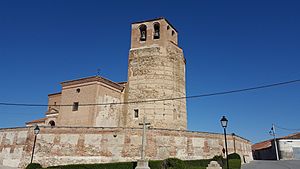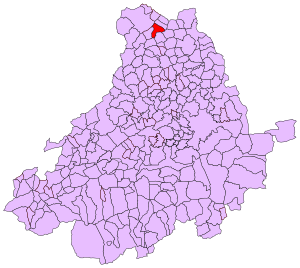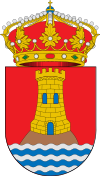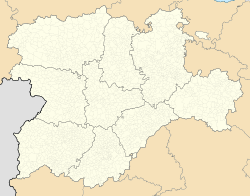Barromán facts for kids
Quick facts for kids
Barromán
|
||
|---|---|---|

Church Mudéjar of the Assumption
|
||
|
||

Extension of the municipal term within the province of Ávila
|
||
| Country | ||
| Autonomous community | ||
| Province | ||
| Municipality | Barromán | |
| Area | ||
| • Total | 20.03 km2 (7.73 sq mi) | |
| Elevation | 800 m (2,600 ft) | |
| Population
(2018)
|
||
| • Total | 186 | |
| • Density | 9.286/km2 (24.05/sq mi) | |
| Time zone | UTC+1 (CET) | |
| • Summer (DST) | UTC+2 (CEST) | |
Barromán is a small town, also called a municipality, in Spain. It is located in the province of Ávila, which is part of the Castile and León region. In 2023, about 176 people lived there.
Contents
Exploring Barromán's Location
Barromán is a charming place in the province of Ávila. It sits in a region known for its history and natural beauty. The town is found in the central part of Spain.
Rivers Flowing Through Barromán
Two rivers flow near Barromán. The first is the Zapardiel River. This river is a branch of the larger Douro (Duero) River. The second river is the Valtodano. It flows into the Zapardiel River.
What Barromán's Name Means
The name "Barromán" has an interesting story. People believe it comes from an old Spanish phrase. This phrase meant "Roman's Place." This suggests that someone named Román might have lived there long ago.
Barromán's Ancient Past
Barromán became part of Castile in the 11th century. Castilian settlers moved there to help the area grow. Before this, there were no known large settlements. However, old Roman building parts have been found nearby. These findings suggest people lived in the area a very long time ago.
Discovering Barromán's History
Barromán has a rich history, seen in its buildings and traditions. The town has grown over centuries. It has kept its unique character.
The Church of the Assumption
The most important historical building in Barromán is the Church of the Assumption. It was built in the Mudejar style. This style mixes Christian and Islamic art. The oldest parts, like the apse and tower, are from the 12th or 13th centuries. These parts might have been from an old castle or watchtower. The main part of the church was built later, in the 16th century. The church stands on a small hill. From there, it looks over almost the whole town.
Barromán's Changing Population
The number of people living in Barromán has changed over time. Like many small towns, its population has gone up and down.
| Historical population | ||
|---|---|---|
| Year | Pop. | ±% |
| 1877 | 483 | — |
| 1887 | 474 | −1.9% |
| 1897 | 514 | +8.4% |
| 1900 | 512 | −0.4% |
| 1910 | 588 | +14.8% |
| 1920 | 523 | −11.1% |
| 1930 | 508 | −2.9% |
| 1940 | 575 | +13.2% |
| 1950 | 666 | +15.8% |
| 1960 | 525 | −21.2% |
| 1970 | 444 | −15.4% |
| 1981 | 368 | −17.1% |
| 1991 | 297 | −19.3% |
| 2001 | 251 | −15.5% |
| 2011 | 203 | −19.1% |
| 2021 | 181 | −10.8% |
The table above shows how many people lived in Barromán each year. You can see that in 1950, it had its highest population with 666 people. Since then, the number of residents has slowly decreased.
See also
 In Spanish: Barromán para niños
In Spanish: Barromán para niños




